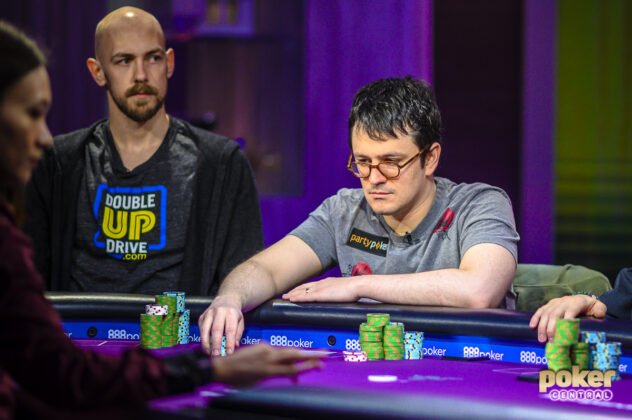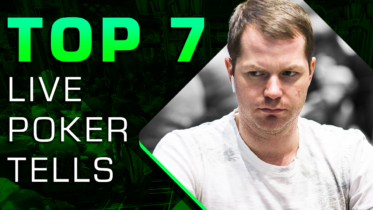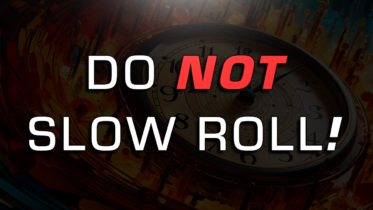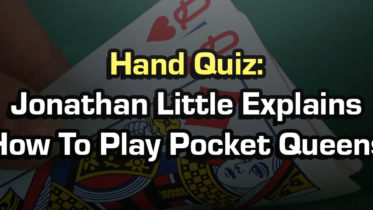“Multiway pots are death.”
I have said this phrase no less than 10,000 times to my students.
The reason I say it so often is because in their low-to-mid stakes games, there are loose openers who are begging to be threebet. They flat large reraises out of position with weak hands and have no idea what to do postflop.
If you have a hand you can reasonably expect to be the best hand versus a particular raising player, you should take it to war.
Notice how I said, “versus a particular raising player.” Not, “a good hand in general.”
Sometimes one of my students will see a player open UTG. It will fold around to them on the button with K-Jo. They’ll fold.
“What the f*** are you doing?” I’ll yell at them. “We watched him open J-7s from that spot 20 minutes ago in the hand history. Were you not paying attention this deep in the tournament?”
“So click on his Raise First In stat and let Notecaddy remember for you. Come on! You’re better than that.”
Should you threebet K-Jo versus an UTG open? 95% of the time the answer is no, but when you have a sitting duck of a player who doesn’t know how to fourbet preflop or checkraise/donk lead postflop, then you should endeavor to play big pots in position versus them with superior hands. ANY poker player of ANY moderate skill level could win given those parameters.
That said, we don’t always want to seek out heads-up pots. I’ll give you an example.
I was recently playing WPT Maryland. This was a fun tournament, because there were some extremely talented pros sitting right next to psycho gamblers who couldn’t read boards. The action was amazing!
Some people were complaining about this, but that seems an ungrateful way to look at the situation. No Limit Hold’em is fun because it’s so messy. You have to be a little sick to play this game. You have to love the challenges and walking on the edge. Additionally, I guess I’m just at that age now where I want my work to be interesting, and holy hell was this particular day unique.
One example of this was when I was sitting at my second or third table. Four players to my right was an extremely talented WSOP bracelet winner. He opened damn near anything he wanted.
So, logically, we should be threebetting him right?
Well, no. Remember our requirements for threebetting someone? We wanted a guy who opened too much AND had no skills postflop. That was NOT this guy. He had every tool in the toolbox, and a few I had never seen before. Watching him play was something to behold. I kept transcribing hands on my phone so I could study them later, in the hopes of picking up a play or two.
Two to my left, however, was the complete opposite of this player. This guy was a gambler and a half. He wanted to see every flop, and when he got frustrated, he’d put big bets in with nothing! He literally shoved 3X pot once with K-J high! I was loving it!
So, given this particular table layout, we have a couple of goals:
- Neutralize the extremely talented player to our right
- Involve the recreational player as much as possible postflop
The way we accomplish this is by deliberately NOT threebetting as much as we normally would.
The threebet is an isolation tactic used best versus normal players who open too much. It isolates the initial raiser by creating a betting wall the players behind you must scale. This is the last thing you want to do with a loose, recreational player behind you.
Let’s say the super talented player opens 35% of his hands. Normally, versus a 35% PFR you’d be perfectly well justified in reraising an A-Jo. But versus this particularly astute player, you should flat.
If you threebet him, you’re simply entering his workshop. This man has worked with every solver to understand the intricacies of heads-up pots. Even though he is out of position, he has certainly cooked in some fascinating tricks into his ranges.
If you repeatedly threebet him now, you will also lose a tool later. Many of these same tournament savants also understand stack dynamics. If you have been flatting him all day and you suddenly threebet him with 30-40X, he will understand that he doesn’t always have the implied odds to flat you out of position, and he will also understand that a fourbet is costly to his stack. He’s likely to give you that first fold, which is extremely valuable when you get into this stack territory.
If you flat, however, it’s likely that our recreational player behind us will flat as well, since he’s in love with taking flops. Now, we will be in a multiway pot.
Multiway pots protect you when you’re dealing with a player who intimately understands GTO concepts. In multiway pots, GTO solutions do exist, but they’re more fragile. In a multiway pot, you’re not capitalizing on every mistake your opponents make by holding onto your initial balanced strategy, like what would happen in a heads-up pot. If one opponent’s EV decreases in a multiway pot that doesn’t necessarily mean your EV increases. Both of your opponents could be playing a style which increases their equity and steals equity from you. One player could be playing poorly, thus dumping equity to another player, while leaving you out in the cold.
For examples of how one player playing poorly could hurt your EV multiway, I’d suggest you play with jamming ranges in Cardrunners EV. Put the ranges in that ICMizer recommends, and then adjust the ranges of the jammer while you rejam the initially correct ranges still. See what that does to your earnings. Sometimes it helps you. Sometimes it hurts you.
Normally, we don’t want to play multiway pots with unsuited big cards, but that’s because unsuited big cards make pairs, and pairs tend to not be the winning hand when multiway pots become big.
This does not apply in this particular spot. This multiway pot will hopefully take the form of:
Player A plays poorly (recreational player) which dumps equity to Player B (us, sweet!) and leaves Player C out in the cold (superior pro).
Superior pro has all the calibrated ranges for postflop, multiway or heads-up, but none of that is going to matter if the recreational player just looks at a flop with a garbage pair (or king high) and decides to shove 3X pot again. This neutralizes the superior pro, and he will have to gamble or fold. We will be protected from playing complex turns and rivers with the superior pro, and our good pairs will generally beat the weak player behind us.
This is a specific example, but it does illustrate what we’re looking for when we decide to play a multiway pot as opposed to threebetting:
- A fantastic postflop player to our right who we would like to neutralize
- A weak player to our left who we would like to involve
I hope these tips have been beneficial to you and your game. Good luck to all of you.



